Diatomaceous earth or silicon dioxide
Origin and source of diatomaceous earth
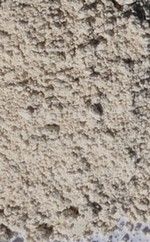
Diatoms or Bacillariophyceae are microscopic unicellular algae fossilised from marine organisms which have the particularity of possessing a siliceous skeleton also known as a "frustule". They can measure from a few micrometres to more than 500 micrometres.
Each species of diatom has a unique series of holes, visible under a very powerful electron microscope.
Diatoms can grow wherever they find a minimum of light and humidity: fresh, brackish and marine waters, but also in the soil and in the air.
Deposits of dead diatom shells found in the soil are better known as "diatomaceous earth".
Note that there are 2 commercially available types of diatomaceous earth :
1 - uncalcined diatomaceous earth (amorphous silica) like the one we sell, which has not been modified in any way
2 - diatomaceous earth calcined at 900°C (crystallised silica), which is mainly marketed for filtration and is very irritating. It also loses its active ingredients (silica).
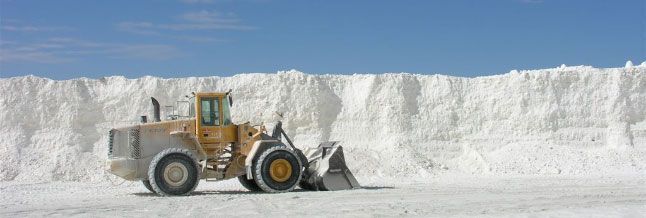
Diatomaceous earth colours
The colours of diatomaceous earth on the market can vary. In fact, it all depends on where it is extracted. But whether it's grey, beige or white, diatomaceous earth is just as effective and natural! Some people prefer to use white diatomaceous earth indoors (for its bright, clean look) for their pets, and grey diatomaceous earth outdoors for other animals, but the properties are identical and the colour is not a particular indicator of quality.
The marine environment, lakes or rivers, geological events or the types of diatom species present at the time will influence the formation of rock types... and therefore their colours.
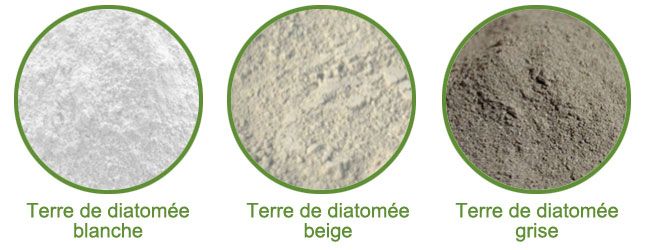
Main uses of diatomaceous earth
Calcined diatomaceous earth is mainly used in industry for filtration due to its high porosity (wine or beer for example), polishing or as a liquid absorbent (diatomaceous earth does not form a sludge after absorbing liquid).
But that's not all it can be used for. As you'll see, diatomaceous earth can be a real help around the house in many different situations. The one we're particularly interested in is its undeniable effect on crawling insects.
Diatomaceous earth, a natural insecticide
Diatomaceous earth is an inert product free from known harmful substances. After grinding, it looks like talcum powder. Thanks to the specific surface area of its grains and its siliceous skeleton, diatomaceous earth has a number of very interesting properties :
High absorption capacity : up to 150% of its weight in water.The ingestion of silica particles by insects causes lesions in their digestive tract.
The fineness and hardness of the silica particles collected by the insect's bristles cause lesions on its limbs or carapace (walking on diatoms is like walking on broken glass!). This causes the insect to lose body fluids, leading to death from dehydration after a few days. The absorbent properties of diatomaceous earth help this process.
As it is totally inert, it provides long-term protection for treated areas, both indoors and out.
Today, diatomaceous earth is probably the safest and most effective insecticide in the home.
A means of combating crawling insects
Diatomaceous earth (or Kieselguhr in German) is a totally ecological (used in organic farming) and natural insecticide used to combat insects, particularly crawling insects such as cockroaches, silverfish, ants, bedbugs, fleas, woodlice, scutigers, beetles, earwigs, etc.
Kieselguhr is available on our site under the name "Diatomaceous earth - Kieselguhr - Crawling insecticide".
Unlike conventional insecticides, with which the insect dies quickly due to the neurotoxic action of the product, it can take several days with diatomaceous earth. On the other hand, while insecticides have a limited effectiveness over time due to their degradation, diatomaceous earth provides long-term protection for treated areas. Only moisture or dust can limit its action. Diatomaceous earth is therefore excellent for indoor use. Its use will be more limited outdoors (in a vegetable garden, for example) because of the daily rain or dew.
But be careful : diatomaceous earth is not selective. It can therefore kill both harmful and more useful insects (garden helpers, for example). It makes no distinction.
Use and application of diatomaceous earth against insects in the home
In the home, basement or attic, simply place a small amount of powder in areas where insects pass through: behind cupboards, in cracks, under the bath, behind skirting boards, door bottoms, in corners, cracks, crevices, etc.
You can also sprinkle on your pets' sleeping areas (leave for 48 hours and brush), their bedding and their kennels to prevent external parasites.
On the terrace, in the yard, in garden sheds: sprinkle the powder along walls, in places where insects pass through and in hiding places, away from dampness.
Duration of action: reapply after the powder has dispersed or if it has absorbed moisture.
Baits such as powdered sugar can be added to encourage insects to ingest the product.
Houseplants can be sprayed with a solution of 5g of powder diluted in 1 litre of water.
Precautions for use : Amorphous silica SIO2
Warning : Although uncalcined diatomaceous earth is composed of amorphous, uncrystallised silica, here are a few recommendations to follow :
1 - It contains an average of 1% crystalline diatomite, so it is advisable to handle it with care and avoid inhaling its dust : wearing a mask is recommended (possible irritation of the respiratory tract if ingested in large quantities).
2 - In the event of contact with the eyes, rinse thoroughly and consult a doctor if irritation persists.
3 - This diatomaceous earth has a drying power that can irritate the skin, so wearing gloves is recommended.
4 - Store your diatomaceous earth in a dry, dry place out of the reach of children.
Crawling insect repellent powder - Celatom amorphous diatomaceous earth
Our diatomaceous earth comes from Europe's marine quarries, which are the richest in silica (90%), representing 20% of the world's resources. The Celatom grades of which it is composed are the purest and most consistent on the market. It is naturally pure diatomaceous earth. Its light beige colour is very different from the very dark colours (presence of impurities) of diatomaceous earth mainly from India or China. It is not treated or added to in any way. An effective natural ecological product for use in livestock, attics, gardens and homes.
Our Penn'Ty Bio diatomaceous earth is available on our website in 4 pack sizes :
- The 150 g can (about 500 ml) comes with a powder cap.
- The 300 g can (about 1 litre) comes with a pouring cap.
- The 1 kg bucket (approx. 3 litres) is supplied as a refill or for use in a powder dispenser.
- The 2 kg bucket (approx. 5 litres) is supplied as a refill or can be used in a dusting machine.
We also sell Kapo Vert diatomaceous earth in aerosol form. This innovation is based on the propulsion of the product by the gas it contains, allowing the powder to be injected deep into the cracks and crevices of the home. A real help in the fight against insects when you know how difficult it can be to reach certain hiding places.
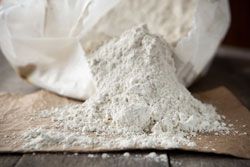
Other uses for diatomaceous earth
Diatomaceous earth can also be very effective as a cleaning product. Because this powder can absorb up to 150% of its weight in water (making it much more absorbent than Sommière earth), it is ideal for absorbing moisture or any liquid (pet litter, stains on fabrics, urine, etc.). Its ability to absorb will eliminate certain odours. With its very fine, abrasive structure, it can also be used to shine copper, stainless steel or silver without scratching (use a micro-fibre cloth soaked in vinegar and Diatomaceous Earth to rub the object to be polished - the result is fast and perfect!)
You can also use it to remove unpleasant odours from your shoes ! Simply sprinkle a small amount of this powder inside your shoes. As a general rule, diatomaceous earth is effective for all unpleasant odours, such as those from your dustbins or fridge. Simply place a small dish near the area to be treated.
Still little known in France, but widely used in the United States and England, it is also used by many gardeners. It can be used in organic farming. Many gardeners use it against caterpillars, slugs, aphids, box tree borer and many other insects. Be careful, though, as this soil acts mechanically, so it won't make any difference to ladybirds and other beneficial insects in your garden. It's up to you to target the areas to be sprinkled carefully, so as to eradicate the target insects rather than the whole ecosystem.
Diatomaceous earth redistributes the nutrients it contains evenly and laterally to the crops by promoting capillary action. Its structure facilitates root aeration. With a pH of 5.6, Diatomaceous Earth is an excellent growth medium for plants, and can be used as an additive or soil improver. The many trace elements it naturally contains (boron, calcium, iron, manganese, copper and sodium) will contribute to their healthy growth.
Another piece of information is that this soil is only effective when it is completely dry. Morning dew or a shower will stop its action against insects. It will regain all its properties once it is dry again.
Frequently asked questions about diatomaceous earth
Q: Hello, can this product be used in a child's bedroom ? behind furniture, beds, cupboards ? Or does it smell dangerous to children ?
A: Diatomaceous earth is a completely inert product. However, care should be taken not to inhale or ingest it. This very fine powder can be similar to talcum powder and can become irritating.
It should be borne in mind that it acts on insects that come into contact with it by injuring their body envelope and digestive tract through ingestion (silica particles). All things considered, the risk to humans is much more limited. These large quantities would have to be swallowed over long periods. It is also recommended as a food supplement for animals. The idea is to place it in every nook and cranny or piece of furniture. We'll avoid putting it on all surfaces and we'll favour non-trafficked surfaces to avoid getting it stuck to your shoes. But the more there is, the greater your chances of hitting the insects. This may seem logical, but we'll also avoid putting any on top of the bed and sleeping on diatomaceous earth. This product still has no odour.
Q: Hello, I would like to know if I can use diatomaceous earth on food products. Kind regards.
A: The diatomaceous earth we sell is Celatom grade MN51. It is also AFA grade MN51.
- One is used as a natural insecticide (MN51): Kills insects and slugs by dehydration, damaging their skeletons by absorbing the protective waxes. For use in gardens, homes, vegetable gardens, barns, stables and animal pens. Can also be used as a dry shampoo, sprinkled on animals' coats to combat fleas and ticks. dosage 100%.
- The other (AFA MN 51) can be used in Codex Food Grade animal feed. Recognised as technical additive E551C. Naturally contains numerous trace elements such as iron, calcium and magnesium, which are beneficial to animal health. Beautifies the coat and improves hoof condition. Reduces overall stress in animals, 2% dosage.
Many of our customers use it without any problems in their hen's nesting boxes, particularly against red lice.
Q: I ordered diatomaceous earth and 4-day insecticide from you to get rid of bedbugs because it's psychologically hard and I wanted to know how to use them properly, especially diatomaceous earth. Do you have to use a little, or even a very little, everywhere, or a lot, etc.?
A: You don't need to use large quantities of diatomaceous earth. A thin film is all you need (2 to 3 mm). I advise you to place it under the bed, at the foot of the bed, under furniture and all other places where there is no traffic. That way you won't have to put it under your shoes and carry it everywhere.
The principle is that any insect passing over this "soil" sticks it to its body and swallows it. So there's no need to use 1 cm thick.
Diatomaceous earth is a complementary product to the treatment against bedbugs. It's really important to treat bedbugs with an insecticide like the one you've bought and only then use diatomaceous earth.
Q: Hello, you write that diatomaceous earth is effective against fleas but also that you should avoid breathing it or having contact with your eyes. In your opinion, is it possible to put some on the floor or in the baskets of cats and dogs to prevent fleas when they might breathe it in or rub their heads on the floor ? If not, how can it be used so that it is effective but safe for pets ?
A: Diatomaceous earth should be applied to floors, preferably on surfaces that are not used by traffic (so you don't get it under your shoes). Its main effect is on all crawling insects, as it wounds and dehydrates the insect as soon as it passes over it (fleas are therefore not the No. 1 insect targeted by this product). You can also apply it to an animal to eliminate fleas. Be careful when applying it to a cat, which is a much more sensitive animal. It should be applied as a dry shampoo to the base of the hair. Then comb the animal with a fine-toothed comb to remove the diatomaceous earth particles (and dead fleas). Diatomaceous earth is a very fine powder that can be likened to talcum powder. It consists of particles of silica. It can therefore be irritating if inhaled too much or by repeated contact. For regulatory reasons, we are obliged to indicate the risk phrases that accompany the product. But you don't have to disperse it into the air when you apply it. Just spread it gently on the ground, so there's no risk of any particles remaining suspended in the air.
Q: I bought some diatomaceous earth to put behind furniture and in cupboards to get rid of beetles. Before using it, I wanted to know whether it could be removed with a hoover or whether there was a risk of it becoming airborne (the hoover filter might not stop this very fine powder). If so, what do you recommend ?
A: Diatomaceous earth can be easily vacuumed up. If your appliance and its filter are in good condition, it shouldn't be a problem.




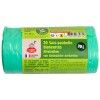
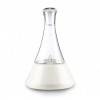

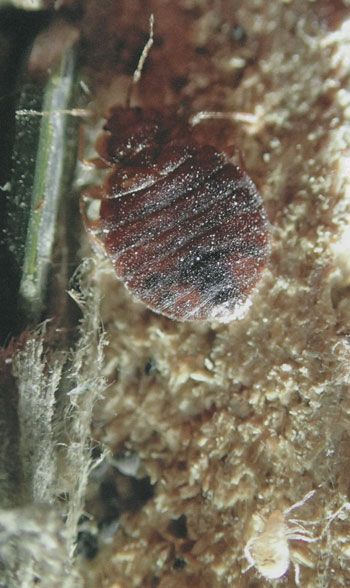

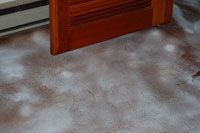
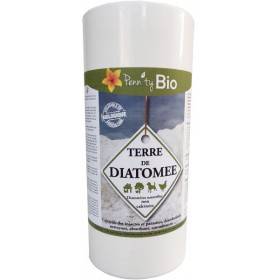
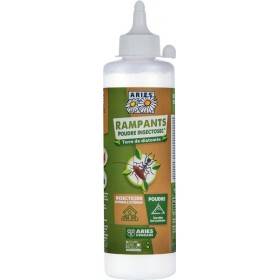
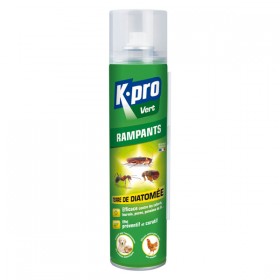
Customer reviews
Commande passée le jeudi soir, colis livré chez mon "commerçant-relais" le samedi matin. Quelle rapidité ! Du vrai professionnalisme !
Emeline
Rapidité de traitement et petit mot avec le colis très appréciable.
XX
Emballage au top. Livraison rapide et sans dégâts.
xxx
Je trouve l'essentiel sur le site à des prix défiants toute concurrence. Continuez comme cela.
XX
Un grand merci pour la qualité et la rapidité de votre réponse.
Simon
Contente de voir que d’autres alternatives naturelles aux produits plus nocifs soient proposés. Entreprise sérieuse dont commandes sont très bien honorées. Merci.
Capzoe
Excellents services, très serviable
XX
Livraison très rapide et colis emballé soigneusement.Site à recommander.
isabelle d.
Efficacité de la livraison , très rapide . Produits livres en parfait état . Très bien emballés . Merci.
Geneviève
Produits d'excellente qualité, arrivés rapidement, et conformes à leurs descriptions.
Michelle G.
Produit performant et raisonnable au niveau prix. Je recommande
XX
Rapidité de livraison. Très bon produits. Merci
Mélina
J'ai bien reçu ma commande. Com' dab' , rapidité efficacité ...Merci
Sally
Je suis vraiment très satisfaite de la prestation de ce fournisseur : délai de livraison très rapide et emballage des produits réalisé avec un maximum de soin. Bravo !!
Eliane
Au fil de mes commandes (j'en suis à la 5 ou 6ème) décidément, du sérieux et de l'écoute ! chaque fois que j'ai eu un petit problème: contact immédiat, réponse immédiate, et tir rectifié illico ! Dans le top 5 de mes sites internet !
Vincent
Je confirme efficacité sur la préparation et expédition du matériel. un grand merci
Jeremy
Bon produit, efficace et laisse une odeur plutôt agréable. Expédition rapide, emballé avec soins. Je recommande
Mary
J'adore. Très grande diversité de produits, les explications sont simples et complètes.Quand aux colis, ils sont extrèmement bien protéger. Un grand merci.
Nadine
Je vous remercie beaucoup de m’avoir fait profiter d’un acheminement par Colissimo alors que rien ne vous y obligeait, sauf votre conscience professionnelle, chose rare de nos jours et qu’il ne faut jamais manquer de souligner.
Cécile
super emballage écolo...bravo !
Isa
super contente, j'y trouve facilement les produits dont j'ai besoin et le service est impeccable et gentil !
Hélène S.
Colis très bien protégé service rapide. Merci. Site très sérieux .
Elios R.
Rapide, sérieux et qualité, produit correspondant à la description, très contente, je recommande votre site et vos produits.
Corinne
Je parlerais de vous a mes amies car vos produits sont vraiment excellents. Bien a vous et tous mes remerciements.
Patricia
Livraison rapide , le tout correspond à mes attentes.
Julie
Livraison rapide et très bien emballé et protégé. Très bonne efficacité. <br /> <br />
XX
Tout est parfait : la qualité des produits, la rapidité d'expédition, la qualité du colis. Je suis enchantée et resterai fidèle à ce site.
Dominique
Très bien...merci.
Olivier
Merci à Penn'Ty Bio pour la qualité des produits, la réactivité de l’Équipe et le petit mot attentif qui accompagne les colis. Votre site est précieux !!
Veronique B.
rien a redire, sauf, le montant des frais de livraison, un peu élevé.
XX
Fidèle à votre marque, je tenais par ce mail à vous féliciter vous et votre équipe pour votre longévité. Votre marque est toujours gage de qualité et sérieux.
Céline
fiable et de bonne qualité pour les services et les produits :)
XX
Service de qualité, suivi rigoureux et rapidité au rendez-vous. Mon colis est arrivé vite même avec un paiement par chèque. Les produits sont très fidèles à leur description et pour un coût serré. A recommander fortement.
Vincent
Client depuis des années Produits de qualités et surtout qualité de service.
XX
Comme d'habitude, envoi soigné, produits performants, Merci.
XX
Service très réactif, emballage soigné , livraison rapide. <br /> Rien à redire . Continuez !!
Sophie
Impeccable.
Christine
Très bonne adresse où l'on trouve des alternative aux produits chimiques notamment contre les insectes. Le service client est également de très bons conseils.
ck
Livraison rapide et produit conforme à la description. J'approuve à 100% le principe du recyclage des éléments d'expédition. Un produit fabriqué une fois soit avoir plusieurs vie. Bravo pour cette initiative.
Christophe
Les produits sont de bonne qualité. Leur prix est raisonnable. Ils sont livrés rapidement, et en bon état.
XX
Parfaitement parfait, je ne me fournis que chez Penn'ty bio depuis qu'ils m'ont débarrassée de punaises de lit.<br />
MARIE CLAUDE G.
Bonjour, je voulais vous féliciter pour la clarté de votre site, la rapidité de la livraison et la qualité de l'emballage.
catherine R.
Produit de qualité conforme à mes attentes, envoi rapide et soigné, très bien.
Anne
j'ai bien reçu la commande et je vous remercie pour votre efficacité.
Margot
Parfait comme d'habitude
Sylvain
Efficacité redoutable. enchanté.
Robert
Livraison toujours rapide. J'ai expérimentée le service après vente qui à été excellent avec une réparation rapide et sans frais. Je recommande vivement Penn'Ty bio
Nadine
Commande reçu très correcte, très bon matos, encore merci et bonne continuation.
Dominique et Monique A.
Bravo ! je vous félicite pour votre efficacité et ne manquerai pas de vous conseiller.
Nicolas
Dommage, les vendeurs ne savent pas lire les indications inscrites sur les produits qu'ils vendent
XX
Site clair, envoi rapide, marchandises bien emballées, et un petit mot charmant!
SM
Produits utilisés depuis très longtemps, toujours la même qualité ! Je recommande, les délais de livraison sont très courts, produits très efficaces.
Laurence
Je vous remercie de votre professionnalisme et de votre réactivité.C'est loin d'être toujours le cas lorsque l'on commande sur internet.
Gaëlle
Excellentes prestations. Les produits sont formidables, l'emballage aussi. Les délais d'expédition compétitifs. Je recommande vivement Penn'Ty Bio à tous ceux que l'état de la Planète pour les générations futures inquiètent.
XX
Très rapide pour la livraison en Belgique et sérieux. Merci<br />
Corinne
Après la découverte des punaises de lit dans 2 chambres de notre vieille maison, j'ai trouvé votre site. le dossier m'a été très utile et je suis très contente d'avoir trouvé des produits moins toxiques que ce que proposent les autres sites de vente.<br /> Je vous remercie d'avoir répondu à mon mail car c'est un peu l'affolement quand on découvre chez soi des punaises de lit.
Françoise S.
Merci. Je tenais à vous faire part de ma grande satisfaction. Je suis enchantée par les produits et par le service. Salutations et bonne continuation,
Odile
Bonjour. Je souhaite vous remercier pour votre rapidité. Le colis est arrivé en bon état . Les huiles que nous avons commandées embaument la maison. Ce diffuseur est génial.
Christian
Livraison rapide , produits de qualité, je recommande Penn'Ty Bio.
XX
Super efficace !!!
xx
Excellente communication, service très rapide (même à l'étranger), emballage parfait ...
Jacques N., Belgique
Tout à fait satisfait de la qualité de la livraison ainsi que du produit commandé.
Régis
Comme toujours service "au top" réactivité, qualité produits... BRAVO et merci pour la qualité de votre travail
Annick
J'ai bien reçu le diffuseur et j'en suis très content.
Paul
Colis bien arrivé. Emballage remarquable. Diffuseur très joli, très efficace et peu bruyant avec de la couleur qui change. Très satisfaite de la commande.
Sabrina
Très satisfaite des délais, les produits sont bien emballés et le petit mot sympathique est fort agréable!<br />
Sylvana
Dimanche soir, invasion de vrillettes du pain. Lundi matin, commande en urgence des produits verts adéquats. Mardi, livraison, traitement et fin de l'invasion.
Jean-Pierre
Envoi rapide, emballage au top, continuez comme ça... :-)
bruno b.
Service clientèle très réactif en cas de difficultés. Livraison rapide. Emballage des produits fragiles excellent. Maison sérieuse, je recommande.
Marie
Livraison très rapide; Tout était parfaitement emballé. Je referai appel à vous.
JV39
Très bon site. Envoi rapide. Prix moins cher que sur d autres sites. Bravo et bonne continuation.
Camille
Bons produits. Fonctionnent très bien.
xx
Produits de bonne qualité, naturels et efficaces, expédition rapide et bien emballée, sav très rapide suite à une erreur de ma part,
XX
JM
Bonjour <br /> C'était ma première commande sur votre site et j'en suis très satisfaite <br /> Je vous remercie pour votre professionnalisme (site, prise de commande, livraison) ainsi que pour le petit mot qui rend le tout humain. Très belle journée.
CG
très satisfaite de ma commande site vraiment sérieux livraison soignée et rapide ,les articles sont conformes a la description,je suis enchantée et recommande vivement
Marie Viviane C.
livraison rapide, produits bien enveloppés avec juste un petit bémol : pour l'imperméabilisant dont le couvercle n'était pas bien fermé.
Alain
Livraison très rapide. Bravo pour la réactivité
François
Entièrement satisfaite.
Ch. D.
Livraison très rapide et produits bien emballés.
Catherine
Très satisfaite. Merci.
CM
Nous sommes très satisfaits du service client : mot personnalisé dans le colis, disponibilité du service après-vente... Nous souhaitons à votre société un succès croissant.
Sara
Je voulais non pas faire une réclamation; mais vous féliciter pour vos produits que j' ai bien reçue, et également pour la rapidité de votre envoi ce qui est plutôt rare dans d'autre site.
Jérôme
Toujours satisfait et pour les prix et pour les produits.
andré a.
J'adore ce site qui fait un vrai travail de sélection de produits que je ne trouve pas ailleurs et sur une large gamme. Je recommande.
Veronique G.
interressante. Beaucoup d'articles référencés. Après pour la lutte contre les punaises de lit, je ne suis pas sure de l'efficacité de certains produits. C'est un vrai fléau ces bestioles.
Francelyne D.
Excellente réactivité !!! Produit en stock, commandé le 23 dec à 8h30, recu le 24 dec à 9h30. On peut guère mieux faire ! Super communication avec le vendeur.
Xavier
Bon produits et service !
Rose-Marie
Je viens de recevoir la pastille noire aujourd'hui et je vous remercie de votre envoi gratuit (ce qui est rare de nos jours).
Laurence
Merci pour votre geste que j’apprécie.<br /> Cela fait plaisir de retrouver l’esprit commerçant de proximité chez un vendeur en ligne. Je surveillerai attentivement cette nouvelle livraison.
Philippe
Jean-Yves
Service de qualité, suivi rigoureux, et rapidité au rendez-vous. Les produits sont très fidèles à leur description et pour un coût serré. A recommander fortement.
JACKY
Content des produits achetés, reçu rapidement et bien emballé. Merci.
XX
Site sérieux. Bons produits.
Magali
J’ai bien reçu le nouveau diffuseur fonctionnel après essai et je vous remercie pour votre confiance et votre rapidité sur le traitement de mon problème. Ce n’est pas tous les jours que l’on voit un SAV aussi efficace !
Florent
Je suis cliente depuis de nombreuses années. Toujours satisfaite du site, des produits et de la livraison.
martine O.
Diffuseurs qui sortent vraiment de l'ordinaire, un envoi parfait - merci BCP
Anthony
Bon service et bon produits
Odile R
MERCI au personnel à l’emballage !!! Ma dernière commande était super bien emballée. Elle a résisté aux (épouvantables) chocs subis pendant le transport. Merci
Veronique
Suite à un précédent message notifiant une erreur de produit à la livraison, Penn'Ty bio m'a fait parvenir à titre gracieux le bon produit. Merci
Martine
je vous remercie pour vos services, c'est très agréable d'être informé de la sorte. colis bien reçu Merci pour la rapidité de la livraison
Bernard
Très contente de vos produits.
nathalie G.
Modèle conforme bien emballé délai respecter continuer comme ça parfait.
Carlos
clair net précis. merci
jannick
Parfait! Préparation et expédition de la commande hyper rapides. Emballage très soigné (j'ai acheté un produit fragile). <br /> Je suis très satisfaite!
Elise M.
Quel dommage pour le produit manquant, je vous remercie pour le remboursement.
Didier
J'ai été très déçue de ne plus trouver mon déboucheur dans mon biocoop habituel, et perplexe en apprenant qu'il était remplacé par un produit à base de soude...c'est comme ça que je vous ai trouvé sur internet.<br /> Alors merci pour le dépannage, pour le mot gentil qui accompagnait mon colis , et bravo pour le calage en amidon de maïs compostable!<br /> Bravo pour votre démarche et à très bientôt.
Cécile D.
J'ai bien reçu mes articles et je vous remercie pour la livraison rapide et impeccable !
Françoise
J'ai bien reçu ce jour, en bon état, les 2 diffuseurs galets. Merci aussi pour votre petit mot manuscrit me souhaitant un bel été. Fidèlement,
Annie
Très satisfaite. Je recommande cette société sérieuse. bon suivi de la commande.
Sandrine
Un grand merci pour votre professionnalisme et la qualité de vos produits. Longue vie à votre site.
XX
Merci et bravo pour la qualité des produits et du service toujours aussi efficace et performant.
Annick P.
Félicitations pour la qualité de votre site & la valeur de ses informations ! Continuez ainsi ! On a besoin de vous !
Ronald
Site très pratique. Commande aisée. Suivi régulier. Délai de livraison respecté. Colis très soigné. Tout est parfait.
Nicole
J'ai découvert ce site en cherchant de la terre de Diatomée. Livraison rapide. Très sérieux. J'ai mis la page dans mes favoris car j'ai repéré d'autres produits.
Isa
Très bon site avec de très bons produits et un soin particulier apporté à la préparation de chaque commande... De plus, Sophie et Quentin prennent la peine d'écrire un petit mot de remerciement avec la commande envoyée....c'est peu commun mais très sympa....:-)
STEPHANE P.
Jean Claude
Bon produit mais frais de port un peu cher.
Marie Paule
service très efficace à chaque fois que j'ai commandé. aucune mauvaise surprise sur la livraison. je recommande
Agnès
trés satisfaite de ma commande,( produit, et livraison,rapide ) MERCI
Danièle M.
Je suis ravi de trouver les produits de qualité et d ‘efficacité incomparable.
Denitza K.
livraison rapide ,prix raisonnable , produits super efficace j'ai vite calmé mes douleurs lombaires ...enfin soulagée . Merci pennty bio
JEANNINE
Commande tout à fait conforme et emballée avec grand soin.
Sarah
Commande reçue rapidement, frais de port raisonnables pour expédition à l'étranger et les produits sélectionnés au top! Merci!
Cédric Adolphe B.
très bons produits et service commercial très performant, continuez sur cette voie, merci.
Annick
THIERRY
Très bon site, du personnel sérieux et la livraison en temps et en heure. Merci
Marine T
Bons produits conformes à mes attentes et livraison au top. Je recommande vivement.
Chantal P.
Produits performants. Très satisfaite de vos services.
XX
Parfait.
Philippe
sérieux
XX
merci pour le suivi de ma commande et les mails par lesquels vous m'avez tenu informée.
Zoé
Bravo et merci : produits de qualité et service TOP... continuez !...
XX
Produits facile à utiliser, efficaces et finalement pas plus onéreux, à l'usage que des produits issus de la pétrochimie. Service livraison impeccable. Je recommande +++<br />
XX
Rien à redire, de la commande à la livraison.
XX
Alex
Merci pour cette première commande, envoyée très rapidement, et dans un petit colis, avec frais de port très raisonnables.
Valérie O.
Personne disponible, de très bon conseil suite à des punaises de lits dans mon habitation, les produits sont efficaces car depuis aucune punaises et la vie à repris son cours ... merci pour tout
Nathalie
Totalement satisfait. Les produits sont super efficaces et tout est très bien suivis. Je recommande vivement ce site.
Stéphane N.
livraison tip top tant en temps et en qualité.
XX
Parfait comme site, commandes faciles à faire et livraison rapide !
Cindy
Très bien , bon produits, La prochaine commande avec plaisir, livraison très rapide.<br />
Rainer
Parfait. Rien à redire. Extrêmement efficace.
Quentin
Site intéressant proposant de bons produits, attractifs et respectant la nature. Le regret c'est le prix de certains articles.<br />
Catherine
Merci pour tout le soin que vous mettez pour une livraison individualisée, chaleureuse et aussi peu impactante que possible sur l'environnement !
Sandra
Très satisfaite.
Louise
J'ai toujours été satisfaite de mes commandes chez Penn'ty bio. Rapide efficace. Surtout les caractéristiques des produits est claire et complète. et le site contient beaucoup d'informations sur les différentes gammes. Merci pour votre travail et votre activité.
XX
Je vous remercie pour vos services. C'est très agréable d'être informé de la sorte.
Anthony
Merci beaucoup pour la rapidité avec laquelle vous m'avez fait parvenir le diffuseur.
Bichette
Très satisfait du site livraison rapide.<br />
Michel
Site très sérieux et personnel vraiment agréable. Envoi rapide. C est parfait !
Ingrid
Excellent!! Commande passée le lundi, reçue le mercredi!!! Les produits sont en plus de super qualité !
MADELINE
Bonjour Monsieur,<br /> Nous nous étions parlés au téléphone il y a quelques années. Bravo pour l'évolution de votre site et vos dossiers instructifs. Vos produits aussi sont très bons. Bonne continuation, bien cordialement.
Marina
Livraison très rapide et produits intacts à l'arrivée grâce à un emballage impeccable.
Etta
Service rapide et efficace. Et Sympathique ! toujours un petit mot, ça fait la différence. Et c'est français en plus :). Je recommande.
XX
Juste un petit mot pour vous remercier de votre disponibilité et pour vous dire également que je suis très satisfaite des produits que j'ai acheté, ils sont vraiment efficaces.
Barb.
Client depuis plus de 10ans. Toujours satisfait du matériel propose. Boutique sérieuse prix compétitifs livraisons et suivis rapide.
XX
yvette
Un diffuseur plus de 80 M², avec huile essentielles eucalyptus, vraiment formidable, on respire mieux et çà sent super bon. Le matin 1 heure, et le soir 2 heures. De jolies couleur, et pour les fêtes une jolie ambiance. Bravo.
PATRICK
Bien, la majeure partie des produits sont efficaces. Je connais cette boutique depuis plusieurs années, je recommande ce site.
XX
merci de votre disponibilité et amabilité!
Eric
Très contente des produits de qualités et une commande reçu très rapidement. Merci
PATRICIA A.
Excellent article sur les diffuseurs d'huile essentielles ! grâce à lui j'ai pu faire mon choix basé sur une excellente analyse de votre part !
Laurence
Site sérieux, proposant de bons produits, efficaces en particulier sur les punaises de lit, fléau actuel. Merci car entre les produits et les housses de matelas nous avons réussi à les éradiquer dans deux maisons à deux ans d intervalle. <br /> Bravo aussi pour la livraison la plus écologique possible.
L.C
Bon choix, bons conseils et service livraison très rapide. J'aime faire mes courses sur ce site.
FDA
C'est ma première commande chez Penn'Ty Bio, et ce ne sera pas la dernière.<br /> J'étais à la recherche d'un nouveau diffuseur d'HE et, après discussion avec Quentin, mon choix s'est arrêté sur l'Elixia (Direct Nature) qui est d'une efficacité redoutable et d'un silence absolument surprenant.<br /> La livraison s'est faite en 72h en point retrait avec un conditionnement hyper sécurisé.<br /> Lors du déballage, j'ai constaté un léger défaut de finition sur la verrerie.<br /> J'en ai fait part à Quentin par texto avec photos à l'appui.<br /> Il m'a aussitôt recontacté pour me proposer un envoi d'une nouvelle verrerie dès que disponible.<br /> Un professionnalisme et un sens du service exemplaires qui font de cette enseigne une valeur sûre.<br /> Penn'Ty Bio est vraiment la boutique en ligne qu'il vous faut connaître.<br /> Je vous la recommande vivement.
Jean-Yves S.
La livraison est rapide, je n'ai jamais était déçue de ce site, et les produits sont pas chers et de très bonne qualité!
Patricia
excellent.
XX
Merci beaucoup le colis est arrivé à la poste hier et je te retire aujourd'hui Merci pour votre efficacité et votre rapidité
Ingrid
Bravo ! je vous félicite pour votre efficacité ne manquerai pas de vous conseiller. Merci à la prochaine commande
Anthony
Service très professionnel et très rapide. A conseiller fortement.
Didier M.
Commande bien reçue. Je suis tout à fait satisfaite. A bientôt.
Tania
Site pratique, compétent, prix corrects. Un envoi très rapide, et je dirai "parfait".
Greg
Site très sérieux, de très bons produits et la livraison est rapide.<br />
Isabelle
Service au top !!!<br /> Colis reçu très rapidement avec un petit mot manuscrit me remerciant de ma commande et de la confiance que je leur ai témoigné <br /> Suffisamment rare pour être signalé <br /> Je vous encourage toutes et tous à les soutenir en passant commande chez eux!!!!<br /> Longue vie à Penn’Ty Bio !!!!<br /> Ils le méritent
Pierre-Steph
Je tenais à vous remercier pour la commande que je viens de recevoir ce matin. Merci beaucoup et je n'hésiterai pas à recommander sur votre site.
Sandrine
Rapide, sérieux, très bien emballé, un sans faute.Merci.
L.H.
Merci à Penn'ty bio d'avoir garder beaucoup de produits de la marque Lerutan et pour le sérieux dans la préparation et l'expédition des colis. Je recommande.
SR
Merci pour le geste commercial, et aussi pour les nombreux conseils et l'excellent service client.
Tristan L
Je ne connais pas encore tous les produits mais contente de ce que j'ai commandé. En revanche un peu cher quandmême ce qui me limite.
xxx
Envoi très rapide et bravo pour votre site de reconnaissance des insectes nuisibles.
Brice
Site de produits naturels et bio très bien fait, agréable et fiable. beaucoup de produits de qualité.
Anne Marie R.
Très bon produit, conforme à la description.
MICHELE P.
Très bon produit facile en entretenir, pas cher.
XX
Des produits très efficaces quand on suis dans l'ordre le traitement. Un léger petit bémol sur le spray insecticide, si possible essayer de trouver un spray plus puissant et plus large pour une diffusion optimale dans les coin et recoin inaccessible. Sinon tout est nickel est une excellente qualité de résultat.<br /> PS: Il faut prendre tout les produit pour un traitement efficace en foyer privé (maison).
Florian G.
Très bons produits je les recommande.<br /> Merci à Pennt'ty Bio pour tout, aussi bien pour les commandes et les emballages.<br /> Bravo Pennt'ty Bio.
Bernadette G.
Très bons produits efficaces.
XX
Bien reçu. Bravo pour votre extrême rapidité. Merci
Magali
Franchement, Penn'ty bio, c'est top ♥<br /> Quentin est super réactif, de très bons conseils. Encore merci de votre efficacité.
Hélios ☼♥
Très satisfaite, merci.
Christine
Mon avis sur penntybio, très bon produit sur ce site pas une gamme monstrueuse mais que du très bon, et pareil pour les livraisons ultra rapides et le excellent sav si besoin. Je recommande vivement. Client depuis 2018 aucun soucis.<br /> <br />
thierry g.
Pour ma part j'ai été satisfaite de la réalisation de ma commande et du délai de livraison. Je recommande votre société.
Nelly
Livraison efficace et bon contact oral avec mon interlocutrice.
Maussane
Très bien ! envoi rapide et conforme à ce qui est annoncé.
Jacqueline S.
Livraison en temps record à l'adresse indiquée en France puis départ dans l'océan indien. Reception des produits en quinze jours à l'autre bout du monde : ravie. Je vous laisserai les avis produits une fois utilisés. Le site est très bien fait et très agréable à utiliser. Le petit mot à la main dans le colis humanise la transaction, je l'ai apprécié. Je pense que vos produits sont très utiles et je vous souhaite une belle réussite et sur la durée.
Sylvie D.
J'ai reçu mon colis hier. Merci de vos démarches,
Sam
Toujours impeccable, les produits, les services. Depuis que j'ai changé de facteur, plus de soucis. (Ça n'est arrivé qu'une fois!!!)
XX
Envoie soigné et rapide.<br /> Merci pour le petit mot à la main.<br /> Très appréciable.
XX
livraison impeccable, produit bien emballé et correspondant au descriptif, excepté pour la surface de diffusion, ma salle principale doit faire 25m2 maximum et ça ne se diffuse pas au-delà.
Pascale
Je suis très satisfaite de mon échange avec le service client (personne à l'écoute, de bon conseil). Envoi rapide et soigné, avec un petit mot sympathique de l'équipe, le top!
XX
Très bien !
XX
Les produits achetés sur le site sont de très bonnes qualités, et j'ai été très bien conseillée. Je recommande !
Aurore
Un grand merci pour cette commande envoyée très rapidement. Je recommanderais votre site
Elise
Merci beaucoup pour votre rapidité et votre professionnalisme.
Julie
Commande et livraison rapides!<br /> Rien à dire, c'est parfait !
Christine
Pennty Bio? Einfach genial. Super rapide , bon produits, super service-livraisons. Je vais recommander bientot =)
xxx
Un plaisir de recevoir les colis soignés et respectueux de la planète de Penn’Ty Bio. Merci
k.
Après essais de divers produits, votre insecticide 4J est le seul à être venu à bout des puces ramenées par le chat de la maison. Livraison rapide par chronopost
JEAN MARIE
Très satisfaite par Penn ty bio. En effet, suite à un produit défectueux ( housse matelas) , j'ai aussitôt reçu un bon de retour pour renvoi gratuit en colissimo et ai reçu la nouvelle housse dans les 48 h, avant même le renvoi de la première housse. Merci pour la réactivité et la confiance de cette entreprise.
dominique B.
Bonjour Sophie & QUENTIN, Merci pour votre petit mot. . . . Ça fait chaud au Cœur de voir qu'il y a encore des Gens Comme VOUS sur cette planète ! Le monde devient de plus en FOU ! ! ! Cordialement.
Dominique T.
J'apprécie les services de Penn'ty bio. Un maximum d'étoiles pour eux.
Ch. D.
Site internet complet, beau et facile d'utilisation<br /> Commande complète et correcte.<br /> Commande emballée a la perfection avec du matériel recyclable, compostable<br /> Délai d'envoi respecté même a l'étranger (Pays-Bas)<br /> Mention spécial pour le petit mot personnalisé ++<br /> On sait pourquoi on commande chez Penntybio depuis 10ans :)<br /> Bonne continuation
Jennifer A.
Site très réactif livraison rapide le produit Stop tique et puce est parfait sauf le pulvérisateur.
Danielle B.
produit parfait.
René
Super produits, envoi rapide et soigné, conseils et échanges courtois ! Une jolie boutique en ligne pour acheter en toute confiance ! <br />
Patricia
Boutique très sérieuse avec un envoie rapide et des produits super efficaces.
XX
Produit conforme aux attentes.<br /> <br /> <br /> <br />
Alain
BIEN,CONTINUEZ COMME çà.
XX
Super produits accueil plus que parfait gentillesse. Livraison au top merci beaucoup
Christiane
Louise
Je tenais à vous remercier pour votre service de qualité, une livraison toujours rapide, des colis bien emballés - qui évitent fuites et casse, ainsi que pour le petit mot personnalisé joint à chaque commande, c'est toujours très agréable.
Isabelle G
Vos explications par email ont été très claires et votre diligence dans le traitement de ma commande et de mes demandes est très appréciée.
Henri
Très bon site, très sérieux je recommande, produits de qualité et service après vente au top, de plus livraison des plus rapide et produits très bien emballés, tout est parfait
virginie
Client depuis de nombreuses années, je suis satisfait à la fois de la boutique et de pratiquement tous les produits achetés.
Jean-Claude
Grande gentillesse et efficacité : que demander de plus ? Merci !
Chantal M.
Commande reçu en 2 jours, impeccable. Tous les produits emballés avec le plus grand soin, petit mot personnalisé! Et encore un petit savon bio au parfum délicieux comme cadeau!! Merci Penn'Ty Bio !!
Orchidée
Cela fait plusieurs fois que je commande chez Penn'Ty Bio et je suis toujours satisfaite de la qualité des produits et de la rapidité d'expédition. Je recommande ce site !
Ghyslaine
Parfait !
Mireille
Bon site, fiable, rapide et efficace.
Leo L.
J'ai été TRES bien conseillée lors du contact. Produit naturel donc c'est parfait.
Lilla
Toujours parfait, livraison, emballage, délai et gentil petit mot personnel pour me remercier de ma fidélité.
XX
Produit anti puce extrêmement efficace !<br /> Le vendeur a pris une demi-heure de son temps pour m'expliquer absolument tout ce qu'il y avait à savoir sur le produit, de la composition a la mise en œuvre.. Bref au top ! Je recommande donc vivement Penn'ty !
Louis
Tout etait parfait, produit,prix,delai<br />
Marco
Excellents produits. Excellent service.
James T
Commande bien reçue;je suis tout à fait satisfaite;à bientôt
Sonia
Merci pour votre démarche si respectueux de l’humain, des animaux et de l’environnement !
A.F
livraison rapide, produit conforme.Prix séduisant.
XX
1ère commande. Très satisfaite : Colis expédié très rapidement et bien emballé. Merci pour votre sérieux.
Ghyslaine
Merci pour l'expédition de la pièce de verrerie qui a été recu cette fois sans casse. Meilleures salutations et à très bientôt sur votre site pour un prochain achat .
Louane
Bon rapport qualité-prix. Envoi rapide et sécurisé !
Chrile
colis reçu ce jour, merci pour le flacon offert
Andrée
Merci à tanteOdile pour m’avoir fait découvrir votre site. Depuis je suis une cliente assidue. Très satisfaite de la rapidité des envois, de la qualité de vos produits qui sont par ailleurs très bien détaillés par leur composition et leur mode d’emploi. Une amie vous a rejointe également avec la même satisfaction <br /> Continuez.
Marité D.
En cette période d'avant Noël, je craignais que me colis arriverais en retard. 48h après mon achat, c'était dans la boîte aux lettres. Du coup, je suis large pour mettre mon achat sous le sapin. Merci à vous
Art4
Merci pour votre sérieux et la réexpédition ultra rapide d'un achat non conforme (dont vous n'étiez pas responsable).
Marc
Cliente depuis plusieurs années, j'apprécie toujours ce site. Meilleures salutations.
France
Hyper cher :: très déçue du prix par rapport à la quantité de produit acheté. Sur le site internet, les flacons semblent grands, or pour 80 euros je me retrouve avec 4 flacons de petits produits insecticides... trop cher
xxx
Prix intéressants. Expédition super rapide à bon prix. Et tout ça de façon agréable !
Alexis M.
Excellent site d'achat. Très rapide et que de bons produits.
James
Livraison rapide, emballage plus que parfait, le diffuseur NEOLIA est merveilleux pas bruyant, fonctionnement idéal. Merci PENNTYBIO pour votre sérieux, site web à recommander.
CLAUDE
Rapidité, emballage nickel et écologique, mot de remerciements personnalisé, produits au top....j adore....je suis une nouvelle cliente conquise. Un grand merci...
Hélène P.
De très bons conseils, une livraison rapide et des produits de qualité !
Fabienne P.
Livraison très rapide. Notice livrée avec les produits ainsi qu un petit mot très agréable. Produits très efficaces, avec de l huile de coude, on en vient à bout. Le produit concentré nous a permis de tout éliminer. Par précaution, nous avons tout de même utiliser le spray. Dans une pièce, nous avons utilisé le fumigène. Pour les animaux, la mousse semble efficace. Dans quelques jours nous ferons le shampooing et plus tard les pipettes. Mais franchement après avoir utilisé d autres marques qui ne fonctionnaient pas, nous sommes ravies et nous recommandons ces produits. Merci
Virginie C.
Une grande compétence, Monsieur Dufil est très professionnel et sait soigner ses clients. Quand à la gamme de produits proposés, elle est parfaite et complète.
Alain A.
Livraison rapide. Produits bien emballés.
Bruno
Une utilisation de vos produits a suffit pour nous débarrasser des poissons d'argent. Merci.
Matthieu
Site intéressant. Je l'ai découvert, en fait. Produits ménager éco-responsable. Bon pour la maison et non agressifs. Merci.
Mydiadao
Sav rapide et disponible. Au top
Severine
Livraison express. Colis toujours aussi bien préparé (cales, flocons, adhésif sur les bouchons qui risquent de couler). Bravo pour votre professionnalisme.
Isabelle
j'ai reçu mon colis aujourd'hui, merci c'est très rapide et sérieux.
Nathalie
Je suis une amie de vos parents et suis toujours très satisfaite de tous vos produits. Ne changez rien et bonne continuation.
Marité D.
Je me permets de vous écrire un petit mot afin de vous dire que votre site est très bien fait.
Tom
MOI JE DIS INCROYABLE !!!<br /> Plus que mieux d'une rapidité de dingue ! bravo et le colis impeccable surprotégé.<br /> Que toutes les entreprises prennent exemple sur vous. merci
AURELIE A.
Merci et surtout, continuez, c'est rare de trouver sur internet une relation aussi personnalisée sur un mode aussi agréable.
Sabine
Super, livraison rapide, suivi très rigoureux, site de confiance, très sérieux à recommander... Merci pour tout.
Bernard
Toujours très bien et parfaitement emballé ! Merci<br />
Valérie
J'apprécie depuis de nombreuses années la qualité de vos produits et le sérieux de votre site. Une petite mésaventure avec un diffuseur me permet de vous féliciter pour la réactivité de votre SAV. Bravo !
Thierry G.
accueil téléphonique personnalisé réactif compétent et bienveillant, livraison rapide et conforme. BRAVO merci pour la qualité de votre travail
Annick
Bonjour, colis bien emballé arrivé sans encombre, démarche écolo bien ancrée et petit mot perso. Merci à l'équipe de Penn'Ty Bio.
Sofi
Tout va bien. Bonne année 2021.
Bernadette M.
J’ai bien reçu mon colis et vous remercie de votre rapidité. Bravo pour le geste écologique et durable. Emballage nickel ! Et mon chat a adoré jouer avec les billes jaunes !
Anouk
Efficace, livraison rapide.<br /> <br />
H
Françoise
Excellent service et livraison rapide. A conseiller pour la santé des animaux (chiens et chats)
MICHEL
j'ai reçu mon colis aujourd'hui, merci c'est très rapide et sérieux.
Clara
Livraison rapide et petit mot manuscrit joint au colis, vraiment très sympa! Merci et continuez, vous le méritez.
Jean-Pierre
Très bons produits, service rapide et de qualité, rapport qualité/prix intéressant. Je recommande vivement.
Alain
Livré hyper vite. Bravo !
Mick
Super, envoi rapide,bien protégé et petit cadeau !
xx
Everything was very nice ! Keep handling your customers likes this!
xxx
Envoi rapide et soigné. Emballage ecoresponsable. Je suis ravi d’avoir trouvé des pièces de rechange pour les diffuseurs à huiles essentielles!
Ina L.
Maryse
Je voulais vous remercier +++ pour votre gentillesse et surtout... votre compétence. C'est vraiment de l'excellent travail... j'ai été bluffée :-)<br /> Renseignement téléphonique 10/5 - produit 10/5... encore merci
Maryse
Merci pour vos conseils avisés. Et merci pour vos produits de qualité.
Loïc
Penn' Ty Bio, c'est ma référence depuis 10 ans au moins. Je ne commande mes produits de toilette et d'entretien que chez eux. Les marques et le service est irréprochable.
GAELLE
Commande bien reçue . Je suis très satisfaite Merci pour votre sérieux
LILIANE
comme toujours excellente réactivité, livraison très rapide et qualité produits TOP. Merci pour votre compétence.
Annick P.
Bonjour, j’apprécie depuis longtemps votre travail : la qualité de vos informations et des produits que vous vendez.
Frederic
Explication, commentaire et livraison en un temps record, tout était parfait, même le petit mot de remerciement écrit à la main ! Merci beaucoup
Monique S.
Bons produits, emballage impeccable, livraison super rapide ! Parfait !
XX
Bon produit , envoi rapide.<br /> <br /> <br />
Christine
Tout est parfait à chaque fois. L'attention portée va même jusqu'au petit message, c'est agréable. Fidèle aux produits et au site plus que jamais.
xx
Claudine
Après 2 traitements à 3 jours d'intervalle, j'ai réussi à éradiquer toutes les punaises de mon canapé. Produit hyper efficace que je recommande vivement.
Emmanuelle
J'ai bien reçu le colis sans aucun problème. Merci pour la rapidité et le sens du service.
Nicolas
Excellent site rapide et efficace. Descriptif intéressant.
XX
merci pour votre professionnalisme. Merci pour les produits envoyés dans de bons délais. Merci pour la qualité de vos produits
Marcelle
J'ai reçu le colis, merci beaucoup de votre promptitude et bonne continuation.
Louise
Une boutique en ligne, sympa et très réactive. On apprécie surtout la livraison express. Pas besoin d'être américain pour livrer dans des délais de champion !<br /> <br />
Daniel de Paris
Envoi très rapide, personnalisé et soigné. Merci
XX
Très bon site. Navigation facile. Les commandes sont expédiées rapidement comme annoncé. Aucun problème depuis que je suis cliente. Je recommande Penn'ty bio.<br />
Elvyne
Noëlle G.
Excellent service après vente après un problème d acheminement de colis par la Poste. Une relation client de très grande qualité. <br /> Cordialement,<br /> <br />
PV
Infestés de puces de parquet, le produit a agi en moins de 24 heures. Livrés en tout autant de temps. Le seul produit qui ait fonctionné et en plus archi cool pour la nature.
Nicolas
Merci beaucoup pour l'info, c'est rapide chez vous, très appréciable!
Denis
ANNE
Très bien, je recommande cette boutique
Salomé
Commande facile, livraison impeccable et produits fiables. Merci.
Isabelle
Boutique sérieuse. Commande arrivée très rapidement. Merci pour votre gentil mot avec la facture.<br /> <br /> <br />
I Defoy
très bien livraison dans les délais, colis intact, bon produit.
Martine
L’esprit commerçant de proximité chez un vendeur en ligne !
Philippe
Sophie. A
Super !
Yann
Première commande chez Penn'Ty Bio : <br /> - navigation sur le site = 5/5<br /> - préparation du colis = 5/5<br /> - Prix compétitifs = 4/5<br /> - Qualité des produits sélectionnés = 5/5<br /> <br /> Vendeur à recommander.
Gaëlle
Service rapide et efficace. Bons produits
XX
Ravie de découvrir un site qui présente des produits de qualité avec une vraie démarche éco responsable à des tarifs intéressants.
XX
2 commandes à mon actif et jamais déçue. Vous avez gagné une cliente régulière :) Merci pour votre sérieux et le contenu bien rempli de votre site ! c'est super d'avoir une description hyper détaillée de chaque produit.
Magali
Merci pour votre efficacité et votre gentillesse, commande, livraison, petit mot agréable, tout était parfait !
Sylvie
Sav très réactif et efficace suite à avarie durant transport. La livraison du produit en remplacement du colis défectueux à été particulièrement rapide. Merci.
Valérie
Livraison conforme et rapide. Les produits sont emballés dans des emballages recyclables, voire compostables : j'ai beaucoup apprécié. Je recommande ce site.
Patrick
Un grand merci pour la qualité et la rapidité de votre réponse.
Tony
Très satisfaite de ma commande chez Penn'ty bio. Site très détaillé, produit reçu rapidement, message manuscrit très sympathique. Je recommande !
XM
Beaucoup de soins dans la commande reçue. Je recommande!
XX
Satisfaction totale. Entreprise au top. J'ai téléphoné le lundi matin, malgré que les contacts téléphonique ne sont que l'après midi, une personne très charmante m'a rappelé presque aussitôt pour mes donner les infos que je souhaitais connaître sur ma commande. Bravo. nous sommes mercredi et ma commande est arrivée. Encore bravo continuez comme ça.
Jacques M.
Les produits achetés sont excellents. Ils répondent parfaitement à ce que je cherchais. Bravo pour votre site
Michel
fidèle cliente de Penn'Ty Bio, je ne me fournis que chez eux.
XX
Juste ce petit mail pour vous dire que j'ai bien reçu votre colis et que mon patron est enchanté ! Ca embaume les huiles essentielles dans le bureau et... ça ne fait pas de bruit ! Encore un grand merci pour votre gentillesse et votre souplesse commerciale.
Sonia
Très satisfaite du produit.Rapidité et emballage très soigné.SERIEUX.
MARLENE
Jamais déçue : les produits correspondent à la description et sont livrés rapidement.
Mireille
Très contente d'avoir découvert ce site internet ! Du conseil jusqu'à l'achat c'est super. J'étais très embêtée après l'apparition de petit insecte chez nous (des anthrenes) et c'est le seule site internet e-boutique qui a pu nous renseigner dessus et enfin indiquer les produits pour les éradiquer sans pour autant nuire à notre santé (mais en respectant les conseils d'utilisation bien sûr). J'ai reçu ma commande rapidement, et avec surprise un petit mot de remerciement personnalisé avec mon nom dessus. Des détails qui au finale font la différence. Un service de qualité rien à dire. Merci !
XX
Bravo pour votre sérieux. Colis reçu très vite et produits impeccables. Belles fêtes de fin d'année
Mat
je viens de réceptionner ma commande. Tout est ok. Merci pour ces produits respectant l'environnement et l'être vivant.
Anatole
Merci d'être à l'écoute pour notre terre et vos clients. Encore une fois je suis très satisfaite de ma commande. Et mes compagnons à 4 pattes sont ravis de se protéger en bio. Merci pour votre attention manuscrite en fin du bon de commande..
Raymonde julie L.
Envoi rapide. Rien a redire.
Marie France
C'est vraiment magnifique et ce cadeau a plu, je commanderais pour Noël.
Martine
Livraison rapide et fiable, dès que le chèque a été reçu. Produits de bonne qualité.
Chantal H.
C’est la première fois que je commande sur ce site et pas déçue livraison rapide de ce produit que l’on ne trouve pas partout. Je recommande
Patrick
Toujours aussi "réactif" et efficace<br /> Bravo et merci pour votre professionnalisme.
Annick P.
Marie-Noëlle
Pas encore essayé le produit, mais le site est très sérieux. Livraison dans un temps éclair, même si je suis en Belgique. Emballage soigné. On peut faire confiance.
Roberta
Je suis arrivée sur votre site en cherchant un diffuseur que je viens de commander, mais je voudrais vous dire que votre site est très intéressant, bien fait. Vos dossiers sont enrichissants merci
Joelle
Colis parfaitement emballé et produits conformes. 1 des produits était très fragile et est arrivé en excellent état, merci :o) Pourquoi achetez à l'étranger alors qu'on a de si belle s entreprises en France? Tarifs identiques ou moins chers que chez Amazon ;o)
Stéphane C.
colis dans les temps,emballage parfait,super accueil téléphonique pour renseignement, je recommande ce site.
ROSCO
Commande reçue rapidement, très bien
XX
Livraison ultra rapide, bien emballée. Produits au top. Parfait !
Caty
Très satisfait de Penn'Ty Bio : choix étendu,prix raisonnables délais de livraison rapides.
xx
Après un souci sur l’article livré, le site a fait preuve d’une excellente communication (simple et efficace par sms) qui m’a permis de me faire livrer un 2nd article par la marque très rapidement. Parfait !
Pierre
Ma commande s'est déroulée sans aucun problème avec une livraison rapide et soignée. La satisfaction est au rendez-vs ! Continuez ainsi ! Merci et cordialement !
Etoile 07
Commande reçue assez rapidement. Merci pour votre sérieux.
Émilie
C'est la deuxième fois que je commande sur ce site. J'ai découvert qu'il existait des verreries aux dimensions différentes. Mon diffuseur étant ancien, j'ai chercher le modèle le plus adapté et j'ai trouvé! Mon diffuseur fonctionne à nouveau
Christiane D.
Correspond à mes attentes
Henry
Marie Aline Roux
anne-marie B.
Un super magasin en ligne, avec plein de produits disponibles.<br /> L'envoi a été très rapide et soigné, avec une très bonne communication à chaque étape. Bref, une adresse à connaitre et à garder ! Merci !
Pab57
Parfait ! Envoi rapide et produits de qualité. Merci pour le petit mot. Je suis très satisfaite !<br />
Julieanaïs
On ne peut pas toujours faire confiance à des sites de ventes sur le web, mais sur Penn'Tio, j' y viens les yeux fermés. Excellente communication avec le service clientèle, un suivi sérieux. Je remercie chaleureusement toute l' équipe.
Sergine T.
Efficace rapide et à l'écoute. Diversité des produits. Efficacité des produits. Respect des délais de livraison et prise en compte des spécificités client PMR ( ce n'est pas toujours le cas). Site bien fait pour navigation et produits bien mis en valeur. Des promos et des bons de réduction cumulés en fonction des achats. Merci pour votre efficacité rapidité et professionnalisme.
xxx
Livraison rapide et bien emballé. Petit message manuscrit qui fait plaisir :)
xx
Une entreprise fiable, efficace, de confiance, chez qui je recommande de faire ses achats.
S.
J'ai enfin reçu le petit colis, hier. Il a mis un mois pour me parvenir, mais vous n'y êtes absolument pour rien, comme je le pensais, il a été mis de côté lors de la grève nationale. Je vous remercie d'avoir fait faire des recherches, j'ai reçu un mot de la poste.
Hervé
J'ai passé ma première commande, chez vous il y a trois jours à peine et ce matin, je reçois mon colis.
Sophie
SATISFAITE
ANNE
C'est extrêmement délicat de votre part d'avoir fait diligence. Je ne manquerai pas de recommander votre site et de souligner votre gentillesse. Encore merci
Michel
Cliente depuis plusieurs années. Super service, réactif, cordial. Les produits sont excellents.
Christine
Bon produit. Merci Penn'Ty Bio. Un seul passage dilué à 5% et les puces ont disparus. Il en restait deux ou trois qui ont dû se perchés pendant le traitement mais sinon c'est performant.
Axel
très bien je recommande.
Sylvie
Envoi rapide et soigné, produits efficaces et réponse rapide à mes questions. Je recommande.
xx
Les produits commandés sont conformes à mes attentes. Quant à l'accueil au téléphone, il est parfait et nous avons toujours trouvé un terrain d'entente. Je fais confiance à Penntybio.<br /> Merci.
XX
Livraison rapide et avec colis préparé avec soin :)
Florian
2 commandes à mon actif et jamais déçue. Vous avez gagné une cliente régulière :) Merci pour votre sérieux et le contenu bien rempli de votre site ! c'est super d'avoir une description hyper détaillée de chaque produit.
clara
Pennty bio prends le temps de renseigner et donne de très bons conseils.<br /> Les produits sont emballés soigneusement et la préparation des commandes hyper réactive. Je recommande les yeux fermés !
Mattloumag
Tout est parfait de la commande à la réception. Commander jeudi et reçu samedi. Et très contente de mon achat . Je recommande
Nadege M.
Fiable, et très bons produits , Service après vente efficace et sympathique.
Vilma V.
Juste un petit mot pour vous remercier du message accompagnant mon colis ! Je croise les doigts pour que les produits marches mais entre-temps, je voulais vous remercier et en profiter pour vous souhaiter à mon tout un joli printemps.
Rose B.G
Je voulais juste vous remercier. J ai reçu mon répulsif " lézards" aujourd'hui, un petit mot super gentil joint à ma commande ça fait plaisir. J espère que ça va fonctionner. Bonne journée à vous et merci.
Cynthia
bravo pour votre réactivité et la qualité des produits
Annick P.
Un grand merci pour votre offre et votre professionnalisme. Pour un service en ligne, vous savez vous rendre proche de nous. Bravo et "suerte" !
Pierre M.
J’ai découvert cette société en faisant une recherche sur Internet pour trouver un insecticide contre les sclérodermes. Je ne peux pas encore juger l’efficacité de chacun des produits par contre je suis très satisfait de la rapidité et de la qualité d’expédition, ainsi que du sérieux de la société. J’ai même reçu un petit échantillon est un mot personnalisé j’ai trouvé ça très sympa! Merci beaucoup et bonne continuation pour votre société que je recommande déjà.
BJ79
Livraison rapide et soignée. J'utilise les produits bio qui sont de très bonnes qualités. Un savon m'a été envoyée par erreur à la place de celui commandé et il m'a été remplacé très rapidement. Bravo pour leur réactivité. Je recommande fortement ce site.
Liliane
Un accueil téléphonique très agréable et de très bons conseils. <br /> Merci à vous.
XX
Bonjour Sophie et Quentin,<br /> Je viens de recevoir ma commande et je tenais à vous remercier pour la rapidité de l'envoi, votre gentil petit mot et le petit présent qui sent bon et donne envie. Bel été à vous deux également
Geneviève
Très bon produit juste ce qu'il faut à prix attractifs Envoi rapide.
xx
Site de grande qualité !
Rose Anne Marie
Vos produits sont de bonnes qualités et les produits très bien emballés
Dominique
Très satisfaite de ma commande. Emballage soigné et envoi rapide. Merci beaucoup pour votre professionnalisme !
Sophie
Très réactifs entre la commande et la livraison. Je suis toujours satisfaite de mes commandes soigneusement emballées !
France L B
Cliente fidèle depuis plusieurs années, je ne peut que recommander ce site. Tout est parfait. Tous les produits au top, rapidité d’envoi, gentillesse, allez y les yeux fermés vous ne serez jamais déçus.
Marité 06
Les produits ont été très appréciés par la destinataire. <br /> De plus quand on pose une question, on a toujours une réponse, un conseil très rapidement. Merci pour votre réactivité
xxx
Merci pour votre envoi : rapidité, ponctualité, information de suivi du colis etc. Vraiment du bon boulot.
E.G
Avec les trois lettres BIO dans votre nom, je ne m'attendais pas à découvrir des billes de polystyrène comme matériaux de rembourrage. Il y a certainement plus écolo !
Michel D.
Produits livrés rapidement dans un colis non surdimensionné, les produits sont conformes à la description. Je recommande vivement ce site très bien fait !
Hervé
Hélène
Excellent site. Très à l'écoute. Livraison rapide. Problème avec un piège à guêpes un autre m'a été livré très rapidement. Chapeau et très agréable de tomber sur des gens compétents.<br /> Encore merci.
XX
Leave a review | See all